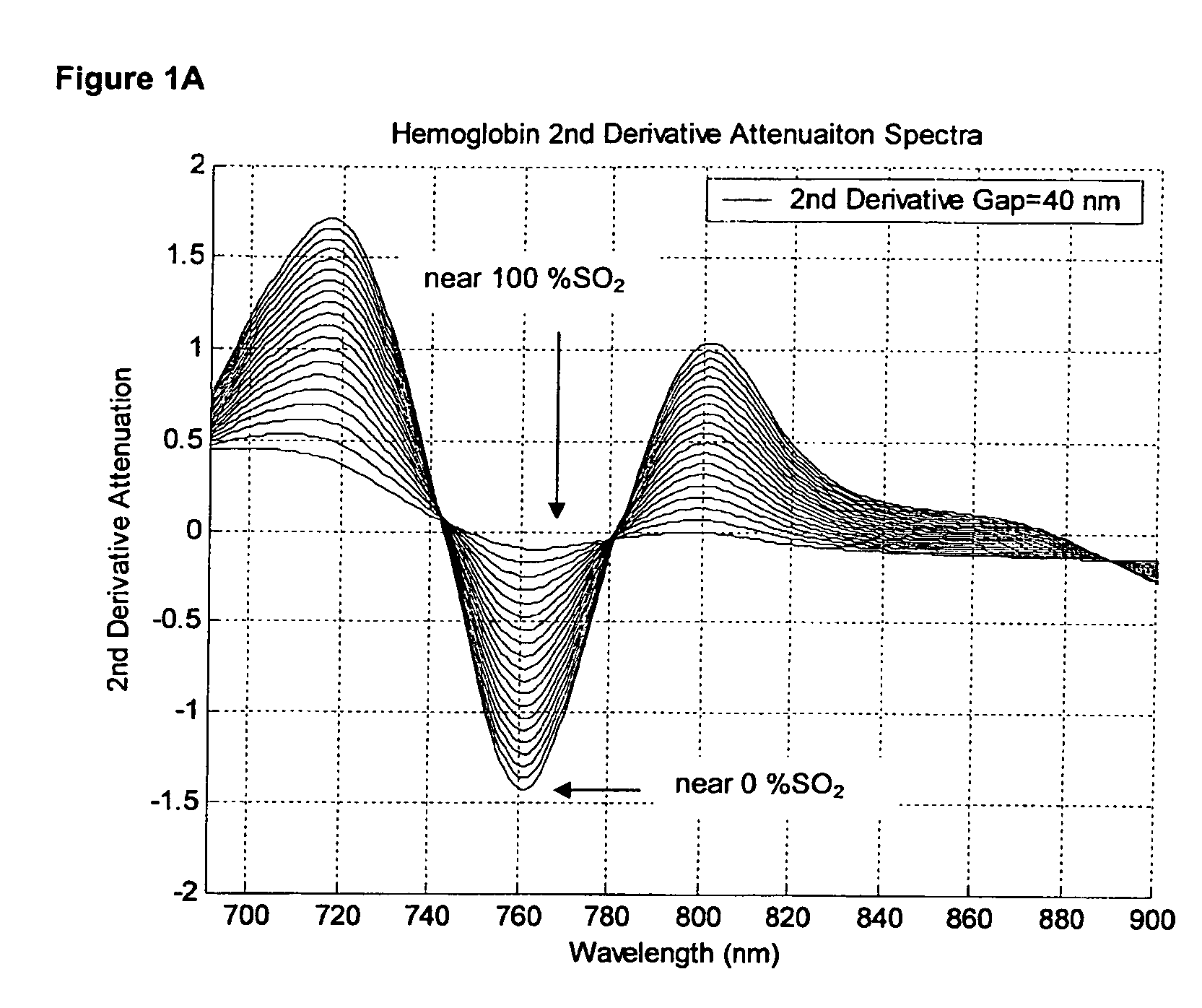Optimized wavelength gap for improved StO2 measurement
a technology of sto2 measurement and optimized wavelength gap, which is applied in the field of optimized wavelength gap for improved sto2 measurement, can solve the problems of affecting the measurement affecting the accuracy of the desired analyte, and relatively few attempts to compare and/or cross-validate. to achieve the effect of degree of robustness
- Summary
- Abstract
- Description
- Claims
- Application Information
AI Technical Summary
Benefits of technology
Problems solved by technology
Method used
Image
Examples
Embodiment Construction
[0031] Referring now to FIGS. 9 and 10, thereshown are a basic structure for a spectrometer 10. The spectrometer can include an optical probe 12 and a base unit 14. The optical probe can include light sources or light pathways for placing light on tissue under study and collecting light from the tissue under study. The light pathways can be carried in cable 16. A probe connector 26 connects the optical probe to the base unit 14. Base unit 14 includes a connector 18, a detector 20, a processor / controller 22 and a display 24. The connector 18 is for connecting the base unit to the optical connector. Detector 20 measures light collected from the tissue at specific wavelength ranges and produces one or more output signals that are proportional to the sensed light. The processor controller then uses the equations noted above to calculate a final value for StO2 from the output signal(s). The display 24 receives and displays the StO2 value. Calibration device 50 can be a synthetic target t...
PUM
 Login to View More
Login to View More Abstract
Description
Claims
Application Information
 Login to View More
Login to View More - R&D
- Intellectual Property
- Life Sciences
- Materials
- Tech Scout
- Unparalleled Data Quality
- Higher Quality Content
- 60% Fewer Hallucinations
Browse by: Latest US Patents, China's latest patents, Technical Efficacy Thesaurus, Application Domain, Technology Topic, Popular Technical Reports.
© 2025 PatSnap. All rights reserved.Legal|Privacy policy|Modern Slavery Act Transparency Statement|Sitemap|About US| Contact US: help@patsnap.com



